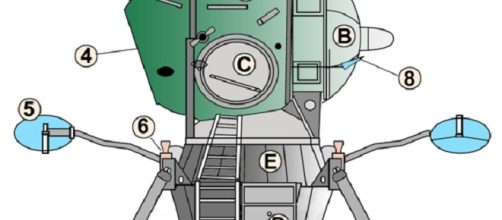A deal reported by Popular Mechanics between the Chinese and a Ukrainian aerospace firm suggests that china may be aiming to put people on the moon sooner rather than later. Beijing has purchased the technology that the Soviet Union once developed for its version of the lunar module, the Lunny Korabl or Lunar Ship. The deal is likely to cut years off of the development of a Chinese lunar module.
The Soviet moon program
Everyone knows about the Apollo moon program. President John F, Kennedy threw down the gauntlet to the Soviet Union in a 1961 speech before a joint session of Congress declaring the moon race to be on.
A little more than eight years later, Neil Armstrong and Buzz Aldrin stood triumphantly on the lunar surface, the superiority of American freedom and capitalism demonstrated. A lot of scientific knowledge and money from technological spinoffs were gained as well.
The Soviet effort revolved around a Soyuz spacecraft and the LK. A giant N1 rocket would blast the two linked spacecraft into lunar orbit with two cosmonauts. One of the cosmonauts would board the LK and ride it to the lunar surface, raise the Hammer and Sickle, and proclaim the triumph of the communist system. The weak link in that scheme was the N1, which had a tendency to explode. The Soviet moon program was terminated in 1974.
What are the Chinese buying?
Unlike the American lunar module, which used separate ascent and descent engines, the Soviet LK used a cluster of two engines for both operations. The main engine could be throttled up and down as the cosmonaut pilot searched for a landing site on the lunar surface. The system added an aspect of redundancy that the American one did not. If the main engine failed for any reason, the backup engine could take over.
The Chinese have asked the Ukrainian firm, KB Yuzhnoe, to recreate the lunar propulsion module, but using modern materials and electronics. The original plans for the Soviet LK would be transferred to China for study. The idea is that eventually, China would use the technology to build their own Lunar Lander, a larger model that would take two or three astronauts to the moon.
The Chinese have proven to be adroit at this kind of reverse engineering. The Shenzhou spacecraft has a number of features in common with the Russian Soyuz.
A Chinese moon shot
The one part of a Chinese return to the moon effort that may prove to be a sticking point is a rocket with enough lift to get their astronauts to the moon. China is working on the Long March 9, comparable to the Saturn V or the Space Launch System. However, that launch system may not be ready before 2030 at the very least. The Chinese could go to the moon sooner if they launch their Shenzhou and lunar module on separate, smaller rockets. Whether or not they will do so is something that Beijing is not prepared to reveal at this time.


